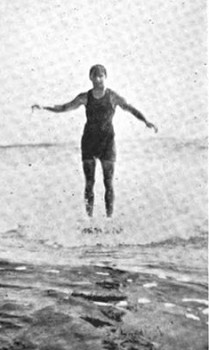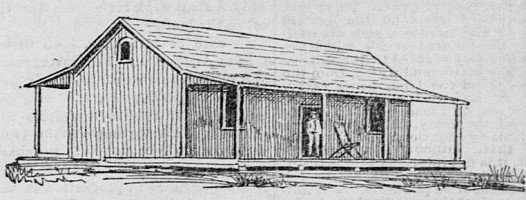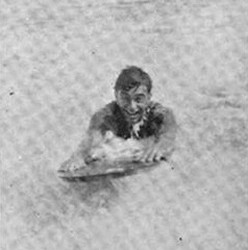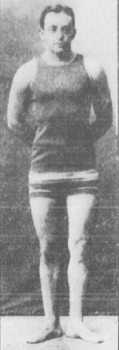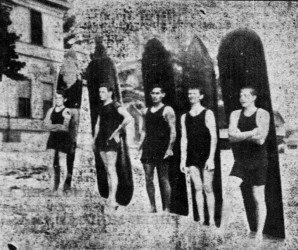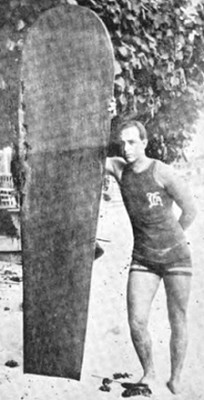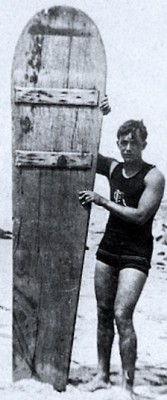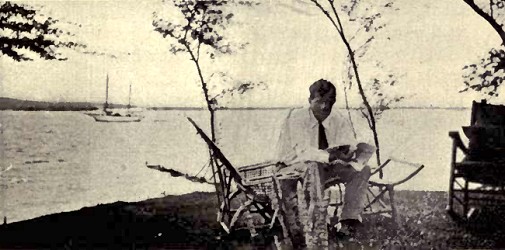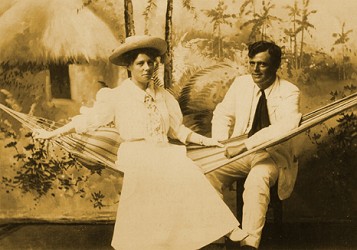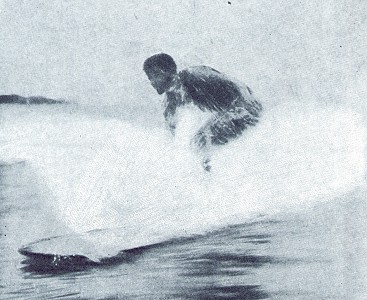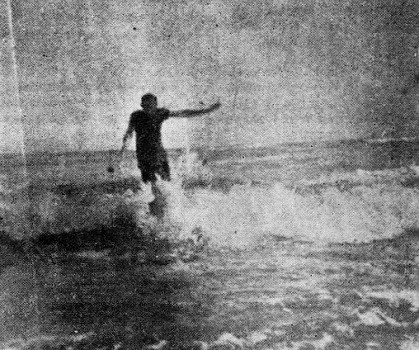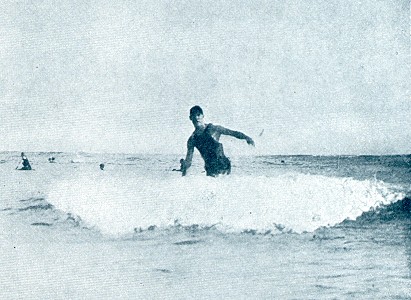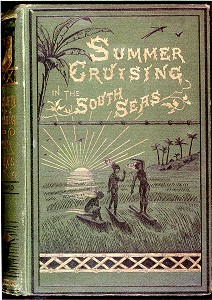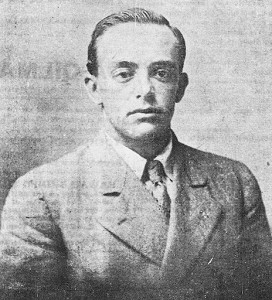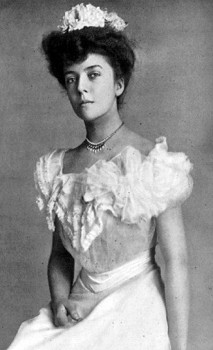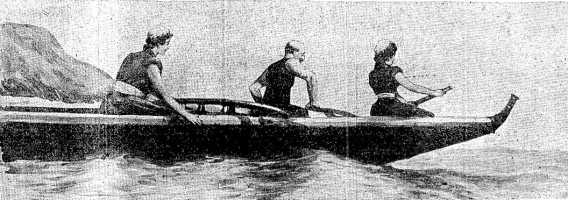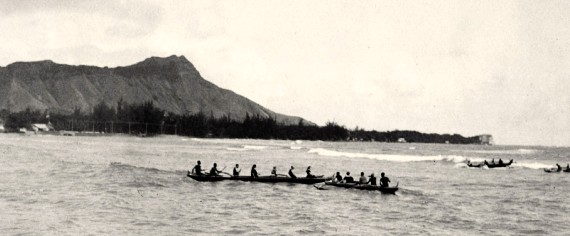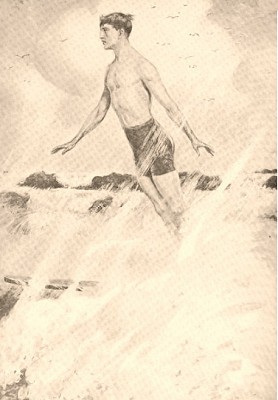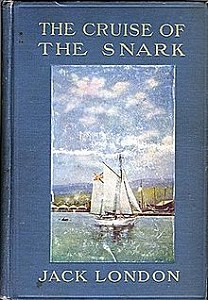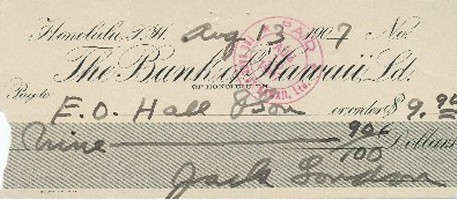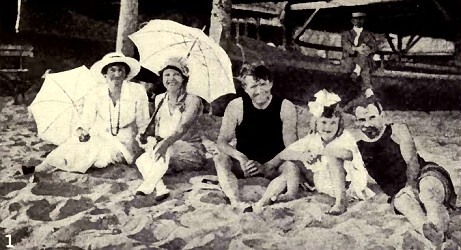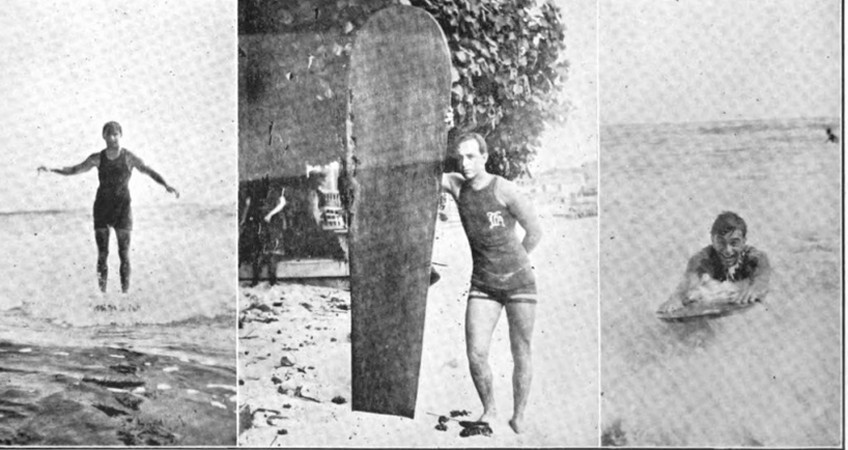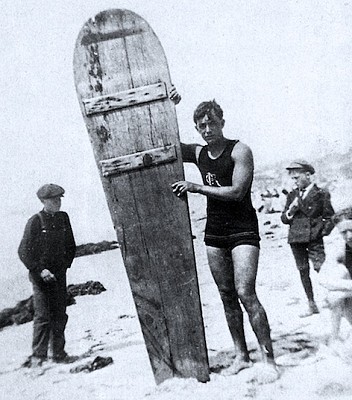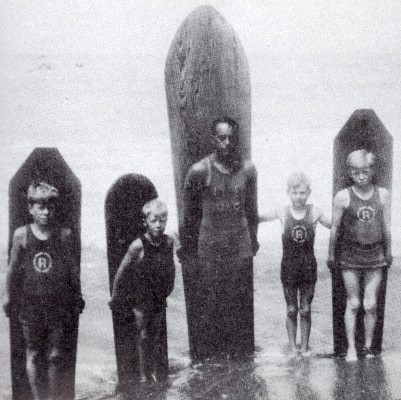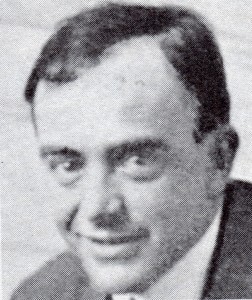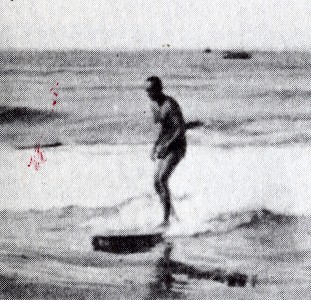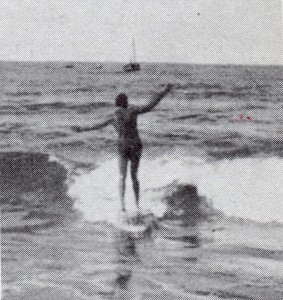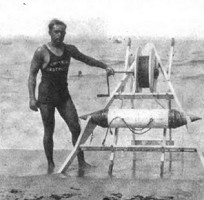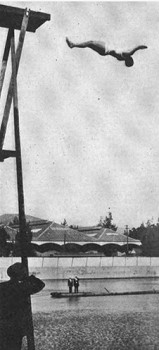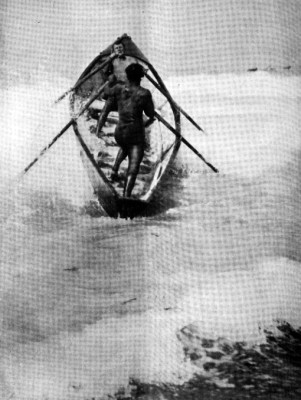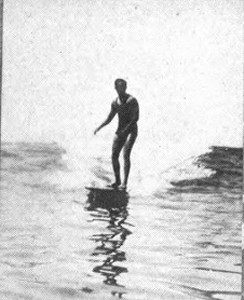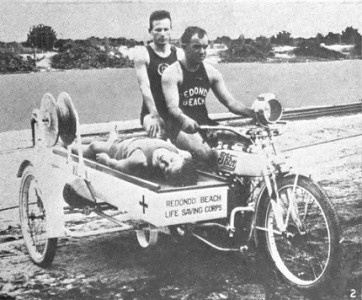 |
surfresearch.com.au
surfers
: george freeth
|
George Freeth
This paper was prepared in April 2017 following comments and feedback resulting from posting a 1907 photograph of a Californian surfer by L.M. Robin on the Surf Blurb in March.
Many thanks to Jereimy Lemarie, Joel T. Smith, Gary Lynch, John Mazza, Cary Weiss, Patrick Moser, Skipper Funderburg, and Arthur Veage.
I am indebted to Joel T. Smith for his three articles Re-Inventing the Sport, Part 1: Jack London, Part 2: Alexander Hume Ford and Part 3: George Freeth, published in The Surfer's Journal, Volume 12, Numbers 1- 3, 2003.
Edwin North McClellan: Surfing at Waikiki, 1786-1950.
During the preparation of this paper, Joel also identified a series of historical articles written by Edwin North McClellan from 1949 to 1958..
for Forecast, the magazine of the Outrigger Canoe Club ,.
McClellan was an renowned historian who first visited Hawaii in 1908, returned on numerous visits, was a OCC member, and wrote his articles after retiring to Oahu in 1941.
They are concise, accurate, insightful, and often present a interpretation of the early history of surfing in Hawaii significantly different to that of Alexander Hume Ford, one of the founders of the OCC and whose writings have dominated much of the research of this period.
McClellan arrived with the Great White Fleet in June 1908, less than three months after the formation of the OCC, where he had his first surf-ride in an outrigger canoe, his first surfboard lesson, and his first coral cuts.
In several articles on the OCC, McClellan rarely mentions Ford, and then usually only as one of the foundation members.
He first encountered Duke Kahanamoku and "Dad" Center on July 16, 1908, when they competed in a surfboard competition off the Outrigger.Club, probably that year's Waikiki Regatta held on the 19th and jointly won by Kenneth Winter and Sam Wight.
At a large reception for the visiting Naval officers at the Moana and in the grounds of the OCC, he recalled the trees screened many couples from inquisitive eyes on the beach, although impudent searchlight beams occasionally brought feminine shrieks.
Aware that temperance, one of the Missionaries' continuing influences, prevailed in Honolulu society, he was not surprised to see that the most readily available.refreshment was lemonade.
However, in Hawaii, as elsewhere, it was not unknown for social taboos to be occasionally circumvented, and Edwin was fortunately directed by a courteous civilian to a very large tent, filled with stimulating liquid; the tent probably somewhere on the Outrigger Canoe Club grounds.
He returned to the much improved Outrigger Canoe Club in June 1910 for more swimming, surfboarding and outriggering, bur, although body-surfing was frequently mentioned, (he) never observed it.
McClellan visited again in November when Duke was still being being praised for scoring four goals for George Freeth's water-polo team two months earlier, soundly defeating an Army team from Fort Shafter.
Intriguingly, McClellan does not have space to tell of the little Imp and the wreck of the Helga on the Waikiki Reef, perhaps suggesting that Duke, and the Waikiki beach-boys, may have assisted the survivors, or profited, from the wreck.
Carrying a cargo of coal from Newcastle (NSW) to San Francisco, as large swells destroyed the Helga in a matter of weeks, the harbour authorities struggled to collect import duty on the large amounts of coal that had recently become available for sale in Honolulu.
| Over several articles McClellan provides a
detailed account of the first European visitors to
Waikiki, and suggests that in the early 1800s, Kamehameha
the Great maintained an early Outrigger Canoe Club
at Waikiki. Interestingly, he identifies Winee of Waikiki as perhaps the first female Hawaiian to depart the islands, persuaded by Mrs. Barkley (the first white woman to visit Waikiki) to accompany her as maid in 1787. Aboard the Imperial Eagle, captained by Mr. Barkley, she travelled to Nootka Sound (Vanucouver Island) before sailing for China, where she was stranded in Canton. In declining health and unable to secure passage back to Hawaii, Winee sailed once more for the north-west coast of America aboard John Meares' Felice, but died at sea on February 5, 1788. She is depicted (right) in John Meares' Voyages (1790), incorrectly captioned Wynee, a Native of Owyhee. |
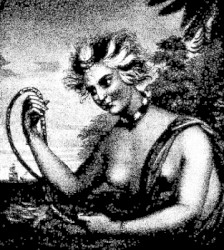 |
In 1950, McClellan noted that plans for a statue of Duke at Waikiki started in 1936.
With the Outrigger Canoe Club and Hui Nalu leading in the project, a twelve-inch model by Tait McKenzie arrived at Waikiki in February 1938.
Duke had requested that his supporters "Wait till I'm dead to erect any statue," was honoured, however it was another fifty years before a full-size bronze statue was erected at Waikiki.
The detail throughout the articles strongly suggests that McClellan had access to a considerable amount of quality material, unearthed by modern commentators, with the benefit of digitalisation, only after hours of research.
With quotations and specific dates obviously taken from Honolulu newspapers, it can only be imagined that "someone" had several scrapbooks of press cuttings relating to surfing at Waikiki, dating back to before the turn of the century.
The material may have been (on loan?) at the OCC in the 1950s, but, given McClellan's long association with Waikiki, could have been anyone's.
Similarly, the three articles on Duke in Australia and New Zealand in 1915 appear to be collated from a collection of local newspaper cuttings from the time.
OCC Archives: Edwin North McClellan
http://www.outriggercanoeclubsports.com/occ-archives/historical-articles-by-edwin-north-mcclellan/
Wikipedia: Edwin North McClellan
Edwin North McClellan (December 5, 1881 – July 25, 1971) was a United States Marine Corps officer, author, and historian.He was the first director of the Historical Section of Headquarters Marine Corps, a historigraphical organisation now known as Marine Corps History Division.
https://en.wikipedia.org/wiki/Edwin_North_McClellan
